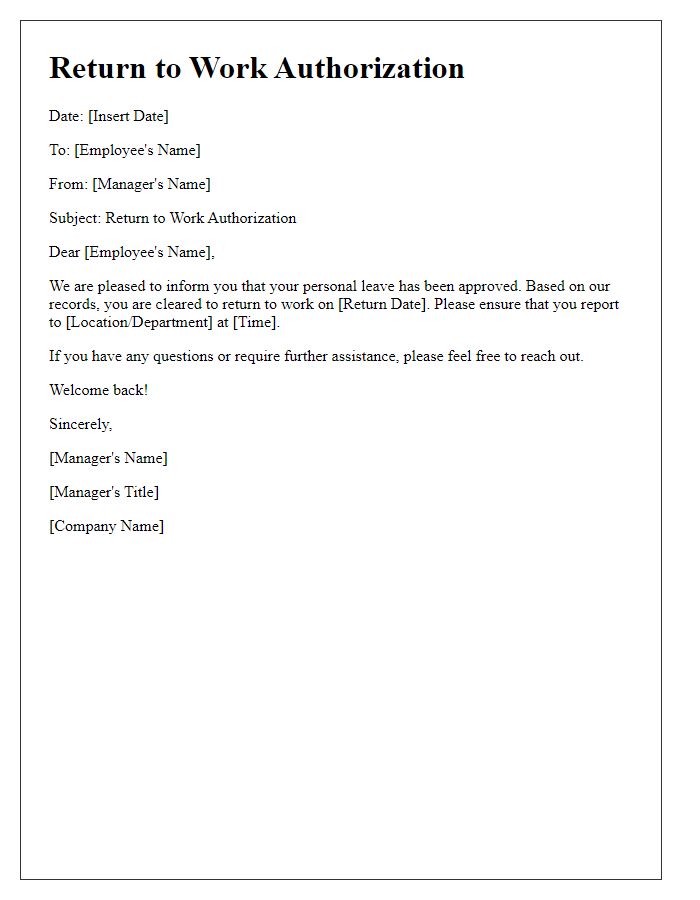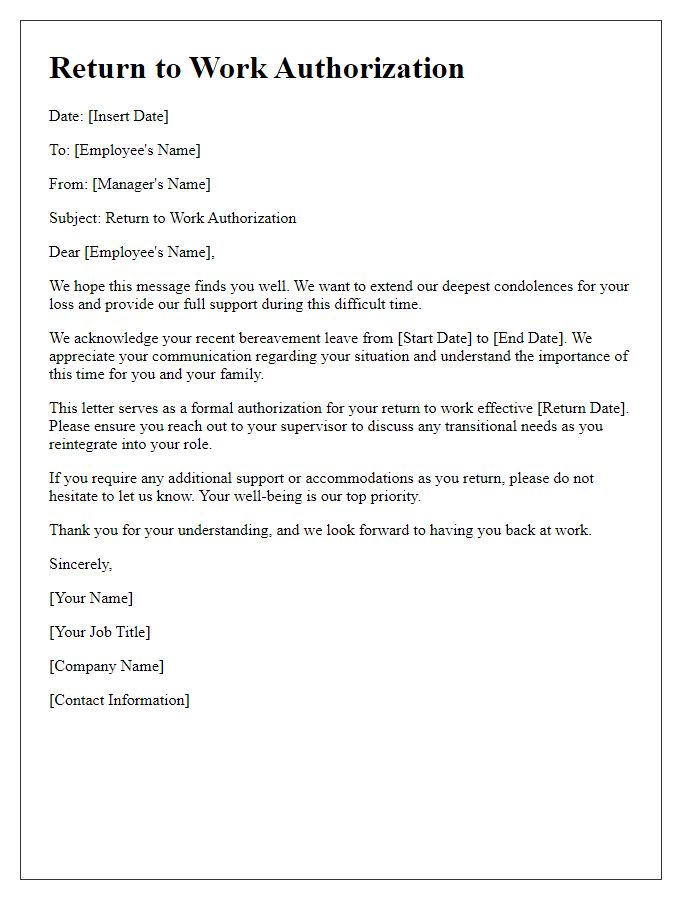Are you looking to craft a compelling return-to-work authorization letter? Whether you're navigating workplace policies or seeking clarity on employee rights, having a well-structured letter can make all the difference. This guide will walk you through the essentials of writing an effective letter that ensures a smooth transition back to the workplace. So, if you're ready to get started on making your return official, read on for our tips and templates!

Employee information
An employee's return to work authorization is a crucial document outlining the necessary details for an individual's resumption of duties after a leave, injury, or illness. Mandatory elements include the employee's full name, identification number, job title, and department to ensure accurate records within human resources systems. The submission date signifies when the authorization is processed, while the expected return date provides a timeline for the employer's planning. Furthermore, the physician or medical provider must provide a signature, along with their license number and contact information, to validate the employee's fitness for duty. Including specific restrictions or accommodations, if applicable, ensures the workplace remains safe and compliant with employment regulations. This documentation is vital for maintaining organizational productivity and employee well-being.
Medical clearance details
Medical clearance for return to work is essential for ensuring employee safety and health compliance within the workplace. Healthcare providers assess various factors such as the employee's medical history, physical capacity, and specific job requirements. This process may involve documentation of absence duration, the nature of the medical condition, and any recommended accommodations. Conditions such as postoperative recovery or chronic illness management provide context for the need for a return to work authorization. Employers must review this medical clearance thoroughly to facilitate a smooth reintegration process, ensuring that the employee can perform essential job functions without risk to themselves or others in the workplace environment.
Date of return
A return to work authorization is a formal document that outlines the details of an employee's expected reintegration into the workplace after a period of absence. This documentation typically includes the specific date of return, which may vary depending on the nature of the absence, such as medical leave (often requiring adherence to health guidelines), parental leave (aligning with family-related transitions), or other personal circumstances. Company policy often dictates the procedures for this authorization, ensuring clarity around the expected roles and responsibilities upon returning, as well as any transitional arrangements required. Additionally, documentation may require signatures from relevant health care providers or human resources personnel to validate the return, emphasizing the importance of compliance with workplace safety regulations.
Work restrictions or accommodations
Employees returning to work after a medical absence may need specific accommodations or restrictions based on their health conditions. Companies often assess individual cases, considering factors like injury type or recovery status. Job roles may require modifications, such as limited lifting capacities (e.g., 20 pounds instead of 50 pounds), adjusted work hours (e.g., half-days initially), or ergonomic equipment (e.g., supportive chairs or wrist supports). Communication with healthcare providers (e.g., physical therapists or occupational health specialists) ensures the appropriate measures align with recovery milestones. Employers must document these accommodations clearly, adhering to legal standards under the Americans with Disabilities Act (ADA) to foster an inclusive work environment.
Employer's contact information
The return to work authorization process often requires detailed communication between the employee and the employer. Essential contact details for the employer include the employer's name, along with their physical address, which should incorporate the street number, street name, city, state, and zip code. Additionally, include the direct phone number, which may be a central office line or a HR department line, as well as an official email address for correspondence. Providing the company's name, including any relevant identifiers like the industry or department, can give clarity. Specific roles such as HR Manager or Safety Officer may also be referenced to streamline the communication process further.













Comments